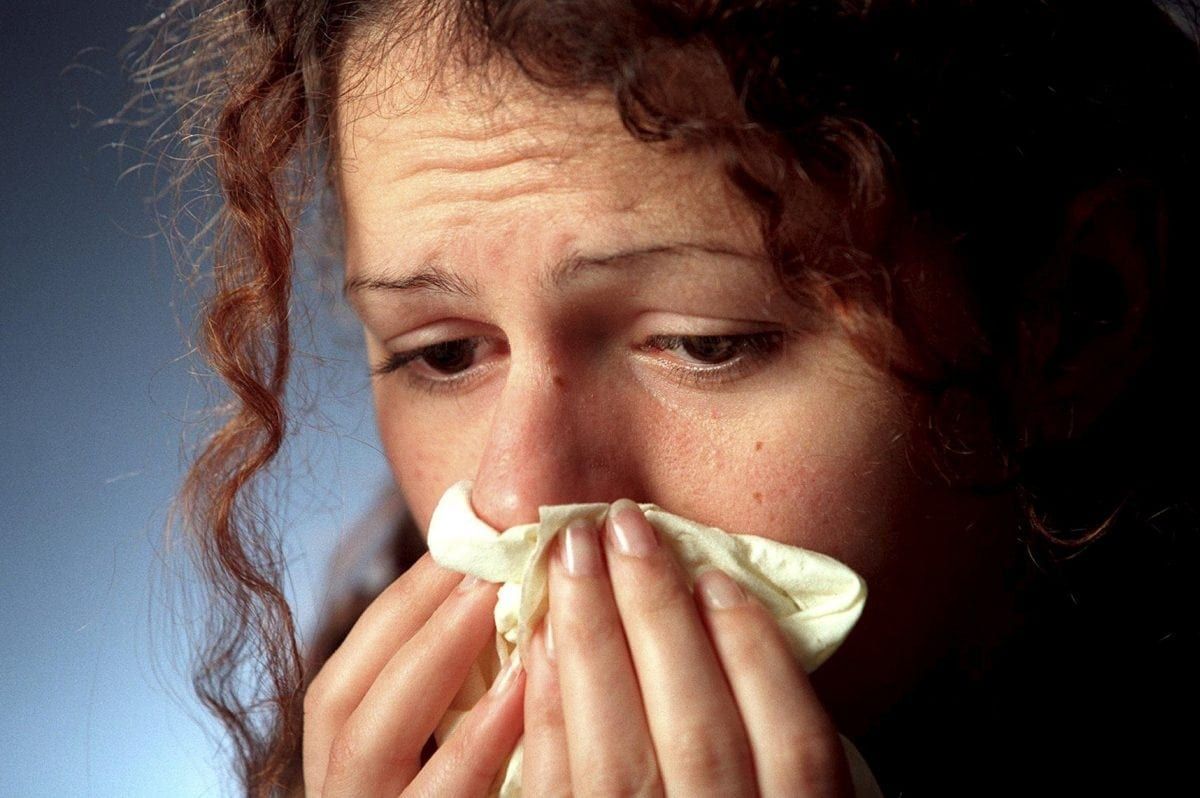
How bad a cold will be and how long it lasts depends on what is up your nose, according to new research.
Bugs living in the nostrils vary enormously between individuals and hold the key to whether they get just a few sniffles – or the full blown sore throat, cough and fever.
The findings could led to antibiotics being prescribed to clean the nose of these bugs to stop incurable colds in their track.
For example, people whose noses are rich in a type of bacteria known as Staphylococcus have worse symptoms than cold sufferers who have less staph.
This is despite their colds being caused by exactly the same strain of virus, say scientists.
The experienced US team who have been researching colds for decades say even they were shocked to find these communities of bacteria, or ‘microbiomes’, fall into six different patterns.
And not only did they account for the level of illness, but also the amount of cold virus inside the body.
Paediatrician Professor Ronald Turner of the University of Virginia said: “The first surprise was you can kind of identify these different buckets that people kind of fit into, and then the fact the buckets seem to have some impact on how you respond to the virus and how sick you get was also interesting.
“There were effects on virus load and how much virus you shed in your nasal secretions.
“So the background microbiome, the background bacterial pattern in your nose, had influences on the way that you reacted to the virus and how sick you got.”
The average adult gets two to three colds a year, while the average child may get six to eight.
Our bodies might not look like a battlefield, but on a microscopic level a struggle for space and food is taking place between rival species of bacteria.
For instance, among the bugs that like to invade the nose is Staphylococcus aureus.
It is found in the noses of three in ten people – with the remainder having other types.
Prof Turner said there could be an underlying “host characteristic” that makes a person have more staph – and experience a worse cold.
This could be due to genetic factors or environmental, such as pollution or pollen, or a combination of them.
Prof Turner said: “Whether there are environmental characteristics that also influence it – whether you’re exposed to pollution or whether you’re allergic or whether any number of things might impact it – I don’t know.
“But I suspect there is some interaction among the host and the environment and the pathogen that determines what you end up with.”
In the study published in Scientific Reports, the nasal microbiomes of 152 participants were tested before and after they were exposed to a cold.
This ruled out the possibility the virus or the resulting sickness was altering the composition.
Afterwards, they were given a probiotic drink containing “good” bacteria to see if it alleviated symptoms or altered the bugs either in their nose – or stomach. It did not.
Prof Turner, who has been researching colds for decades, is also sceptical about whether a nasal spray would have more effect – although antibiotics may offer more hope.
He added: “It is not going to be so simple, I don’t think, as saying, ‘OK, what happens if you give a probiotic?’
“One of the things that would be interesting to ask, and this would be a completely different study, is, what happens if you give antibiotics?
“Can you change the nasal flora by giving antibiotic? And is that a good thing or is that a bad thing? Those are all unknowns.”